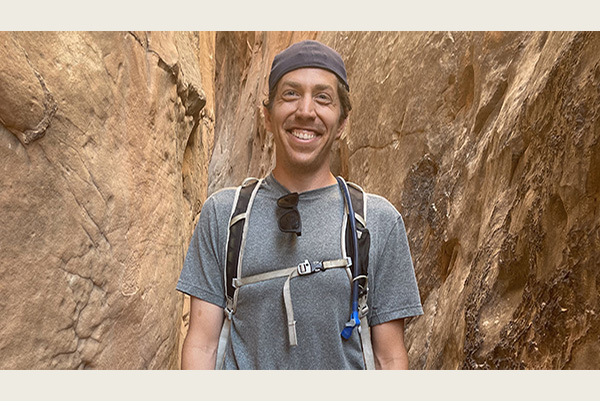Miami alumnus gains new televised audience for web-based video series on science and the national parks
OutSCIder Classroom has started airing on PBS stations in southwest Ohio

Miami alumnus gains new televised audience for web-based video series on science and the national parks

Coming up with the name
Anderson is host and executive producer of the series. It was his wife Mary Ellen’s idea to call the series OutSCIder Classroom. She thought it would be a clever way to let people know it was a show about science, he said, noting that she also does all the filming, audio, and direction.
They will be releasing season 3 this school year, one new video a week until May. The videos were filmed in fall 2022 and summer 2023, all in national parks along the East Coast and the Midwest. The online videos are then packaged together and edited for 30-minute broadcast episodes.
“In addition to doing science, which is our bread and butter, we’re going to dive into history topics, too, which is really fun,” he said.
For the first two seasons, their funding was provided by National Geographic “as a way to provide more science and geography resources to teachers,” he said. “For the third season, we were able to allocate some of our GEARS funding (part of the COVID relief to schools and districts) for production, which was really helpful since it let us produce about 20 more videos.”
One of the best parts of the job? Meeting and working with “some very cool people in the science world,” he said. “We’re constantly surprised by who agrees to be a guest host for us. Everyone we’ve had on the show has been great and so generous with their time.”
Anderson hopes young viewers can imagine themselves as scientists and in the parks. “Representation matters, especially with kids,” he said.
Filming 'not for the faint of heart'
Anderson said each national park has something cool to see or learn about, but some special experiences have stayed with him — such as filming on the island of St. John to talk about how tectonic plates created the Virgin Islands or at Congaree in South Carolina that protects one of the few old-growth bottomland forests left in America.
The filming can be challenging, with them often having to wake up in a tent at 5 a.m. to hike a few miles to a filming location.
Days in the field are often long, usually more than 10 or 12 hours, and a lot of times they are filming eight, nine, sometimes 10 days in a row. “And usually without access to a hot shower,” he noted, “so it’s hard work for sure, but it’s been a blast.”
Regarding the classroom resources, Anderson said each park has a two-week lesson plan that is free to access on the website.
“We’ve got 12 up on the website right now,” he said, “and we’ll have four more that will be released later this year.”
All of the materials are standards-based, so they align with what teachers are teaching at each grade level. They are designed to include as many hands-on activities as possible.
“You don’t just watch a video learning about the water cycle in the Everglades, you also play a game to learn the path water takes around the planet,” he said. “You collect data on the porosity and permeability of different sediments. You collect data on pollution in your local watershed. You put together a proposal for your community for green infrastructure to address any water pollution issues.”
For more Miami news, go to MiamiOH.edu/news.